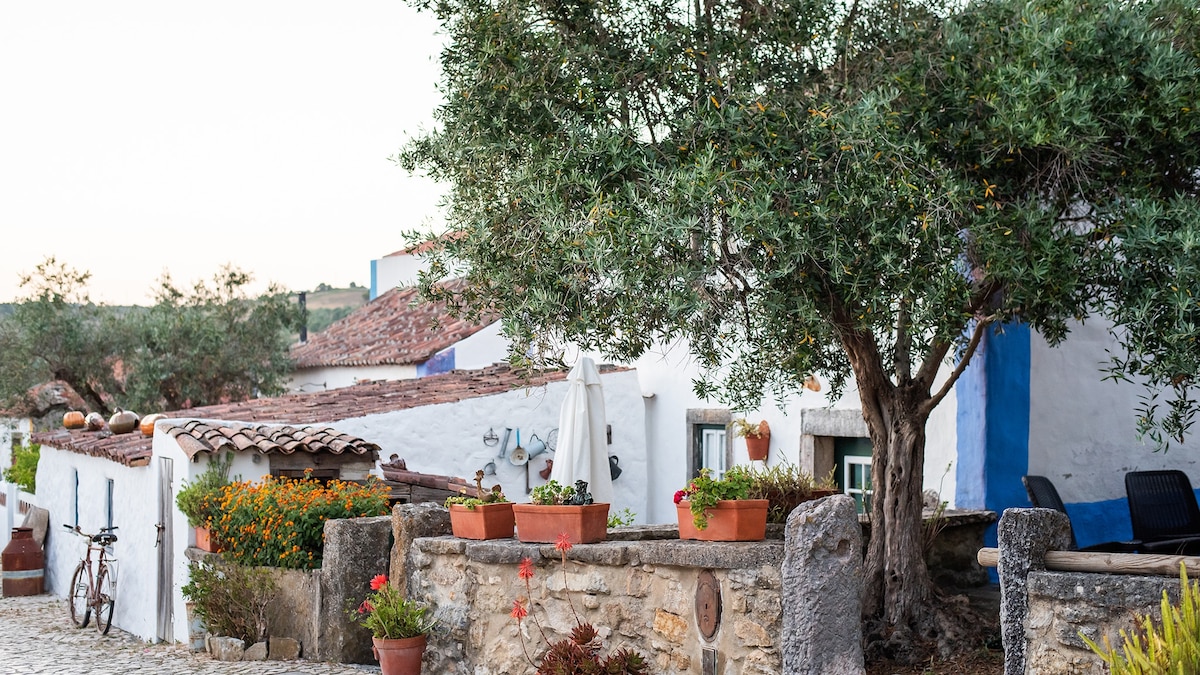
Waves crash against the crags below and wind blusters wildly, misting my face with salty Atlantic spray. I’m standing on a coastal cliff in continental Europe’s westernmost vineyard, where grapes grow only with the help of the area’s skilled viticulturists. Small, family-run winery Mare et Corvus plants its vines here between protective stone walls, sheltering them carefully with nets, and uses the grapes to produce around 6,000 bottles of wine a year.
Though Colares — part of the wine region of Lisboa — is less than an hour’s drive west of Lisbon, you wouldn’t know it. Portugal’s capital is in the midst of a heatwave, but here it’s grey and humid. This microclimate helps give the area’s wines their distinctive flavour — as does the unconventional terrain where producers grow their vines.
On the way to nearby Viúva Gomes winery, you’ll find a small section of grapevines that snake along the sandy ground beside the road. The winery’s owner José Baeta tells me they’re significant — not only have they endured this rough coastal environment, they’ve also outlived a devastating plague. “Our small region became very famous in the 1860s when we had the grape phylloxera [an insect pest],” he explains. “Our vineyards survived because they’re in the sand.”
Later, at seaside restaurant Azenhas do Mar, a bottle of golden-yellow Malvasia de Colares wine is brought out for tasting. It’s crisp, salty and citrusy, with echoes of the region’s briny wind. It pairs perfectly with both an octopus salad and the traditional Portuguese stew cataplana, made here with shrimp, mussels, clams and sweet potato.
Continuing north the following day, it’s around an hour’s drive to Quinta da Boa Esperança, a homely winery in the Lisboa sub-region of Torres Vedras, where the salmon-pink Rosé Atlântico is a highlight.
Nearby AdegaMãe is the next stop— there’s a gentle breeze as expert sommelier Ricardo Marques guides us around the striking, contemporary winery. “We don’t use herbicides or pesticides, that’s why we have these natural weeds growing between the vines,” he says, gesturing towards the neat lines that stripe the surrounding hills.
The landscape seems calmer than the coast, but the wines are still shaped by the ocean. A glass of Arinto is a must-try at the on-site restaurant Sal na Adega. The region’s signature white, it’s lively with a crisp acidity.
From the swell to the sacred
Aside from wines, Portugal’s west coast is also renowned for its roaring surf. Board riders flock to Praia do Norte, in the seaside town of Nazaré — 1.5 hours from Lisbon— for a chance to catch one of its giant waves. Created by the underwater Nazaré Canyon, these huge barrels are a sought-after visual spectacle, too. The 16th-century São Miguel Arcanjo Fort, at the far end of the Sítio promontory, offers the perfect vantage point — as well as a small surfing museum.
Today the sea is calm, so instead of riding waves, we drive 20 minutes inland to Alcobaça, a city dominated by the grand, solemn monastery at its centre. A UNESCO World Heritage site, it’s a striking example of Cistercian architecture, its weathered facade blending both gothic and baroque styles.
Just across the road is another of the city’s sacred institutions — Pastelaria Alcôa. Inside, owner Paula Alves pulls a tray of pastéis de nata (Portuguese custard tarts) from the oven. “Listen for the crunch,” she says. “You can’t cut it in half — it ruins the taste.” It’s creamy and perfectly caramelised, cooked from a recipe originally crafted by the neighbouring nuns. The pastry shop’s skilled pâtissiers hand-crack between 500 and 1,000 eggs a day to make the delicious confections.
Sweet tooth satisfied, we head south to Alenquer for a final stop: Casa Santos Lima, one of Portugal’s biggest wineries. The estate house is surrounded by undulating, vine-covered slopes that stretch as far as the eye can see. We’re around 15 miles from the coast, but area manager Duarte O’Neill tells me this clay and limestone soil used to be seabed. Over the years they’ve found plenty of oceanic fossils in their vineyards, which are now proudly displayed in the wine shop.
It’s another reminder the Atlantic Ocean’s impact can be felt all over the region — its fierce winds and waves reaching across land and through time, living in the minds of its people and in its storied vines.,
Three wines to try
1. Villa Oeiras Carcavelos
This sweet but well-balanced dessert wine is created from a blend of Arinto, Galego Dourado and Ratinho grapes and aged for seven years.
2. Quinta De São Francisco D.O.C Óbidos
An aromatic, ruby-red wine with hints of spice and chocolate, made from a blend of Castelão, Aragonês and Touriga Nacional grapes.



